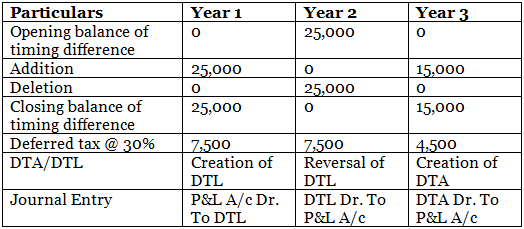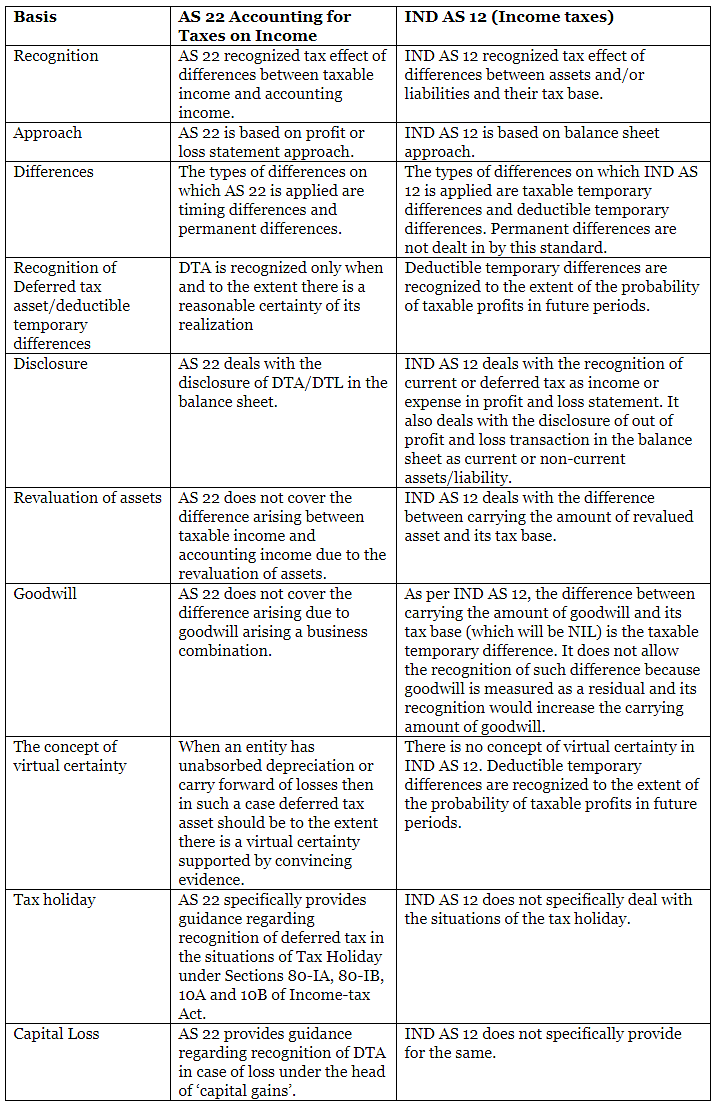AS 22 Accounting for Taxes on Income | Advanced Accounting for CA Intermediate PDF Download
Introduction - Accounting Standard
Accounting Standard 22, prescribed by ICAI, is used for accounting for taxes on income. This standard is applied to reconcile the disparities between accounting income and taxable income:
- Accounting income represents the net profit before tax for a period, as indicated in the profit and loss statement.
- Taxable income is the income subject to income tax, calculated based on the Income Tax Act, 1961, and Rules.
Types of differences and why they appear
The differences can be of two types:
Timing difference
- Timing differences refer to variations between accounting income and taxable income that can be rectified in future periods.
- For instance, depreciation is permitted differently under the WDV method for computing taxable income and the SLM method for computing accounting income.
Permanent difference
Permanent differences are disparities between accounting income and taxable income that cannot be rectified in subsequent periods.
For example, cash donations are disallowed when computing taxable income but are considered as expenditures when calculating accounting income.
Differences in income and expenses can arise due to various reasons, such as:
- Expenses recorded in the profit and loss statement but disallowed as per the Income Tax Act 1961 when computing taxable income.
- Provision for bad/doubtful debts allowed in accounting income but disallowed when computing taxable income.
- Varied depreciation rates as per the Companies Act 2013 and Income Tax Act 1961.
- Recognition of income on an accrual basis in the profit and loss statement but on a receipt basis for computing taxable income in subsequent periods.
To address these variations, AS 22 must be applied.
When to Apply AS 22 Accounting for Taxes on Income
- AS 22 is utilized when there are variations between taxable income and accounting income.
- If taxable income surpasses accounting income, a deferred tax asset is generated.
- Conversely, if accounting income exceeds taxable income, a deferred tax liability emerges.
- Recognition of a deferred tax asset is warranted only when there is a reasonable certainty of its realization.
- The acknowledgment of a deferred tax asset should align with the degree of expected realization certainty.
- Future profits estimation is crucial in determining the reasonable certainty, based on a thorough review of past profit and loss statements.
- In cases involving unabsorbed depreciation or carry forward of losses, a deferred tax asset should be acknowledged where there is a virtual certainty substantiated by compelling evidence.
- Virtual certainty hinges on a judgment of compelling evidence, which must be available in a tangible form at a specific date.
How to apply AS 22 Accounting for Taxes on Income
The application of AS 22 can be exemplified with the following scenario:

Deferred Tax Computation

Comparison between AS 22 and IND AS 12

IFRIC 23
IFRIC 23 addresses Uncertainty over Income Tax Treatments, requiring entities to handle uncertain tax treatments using the most appropriate method for resolution. The main difference between AS 22 and IFRIC 23 is that IFRIC 23 mandates entities to assess whether it is probable that the taxation authority will accept an uncertain tax treatment when determining current and deferred income tax assets and liabilities.
If it is not probable, the entity should account for the uncertainty using either the expected value approach or the most likely amount approach. IFRIC 23 is applicable for annual reporting periods beginning on or after January 1, 2019.
|
53 videos|134 docs|6 tests
|
FAQs on AS 22 Accounting for Taxes on Income - Advanced Accounting for CA Intermediate
| 1. What is the purpose of AS 22 Accounting for Taxes on Income? |  |
| 2. How does AS 22 Accounting for Taxes on Income impact financial statements? |  |
| 3. When should AS 22 Accounting for Taxes on Income be applied? |  |
| 4. What are some common types of differences that lead to deferred tax assets and liabilities under AS 22? |  |
| 5. How is deferred tax computed under AS 22 Accounting for Taxes on Income? |  |
















